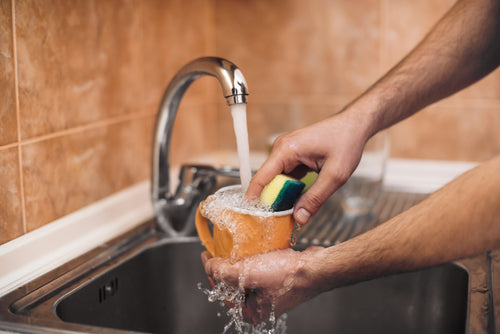
Jul 20 , 2017
These 12 Simple Steps Will Help You Conserve Water
Water is everywhere. It covers around three-quarters of the globe. It makes up around two-thirds of our bodies. If we lived near the ocean, wed think there was an unlimited amount, as we looked towards the horizon.
The fact is, though, that water is a limited resource. While water filters and minor treatment in the home can help keep our water clean and potable, steps to conserve water now can help prepare for the future.
Conservation achieves three main goals: it lessens the likelihood of contamination, saves money and helps your community plan for future resource use and growth.
Here are 12 ways you can help conserve water.
# 1. Wash dishes by hand.
The key to washing dishes is to do it efficiently. Dont run the water the entire time while handwashing. Handwashing can use up to 27 gallons if you leave the water running. Fill a sink with warm water, soak the dishes, wash them and then turn the water on for rinsing.
# 2. Use the dishwasher efficiently.
Dishwashers can save up to 5,000 gallons of water per year. Energy Star machines use up to 41% less energy as well. Make sure the dishwasher is fully loaded, top and bottom. Use the correct settings. Try to avoid using a detergent containing phosphates, which can deprive rivers of oxygen.
# 3. Use less water in cooking.
Most recipes call for much more water than needed. For example, stirring pasta keeps it from clumping, so it uses less water. Frozen vegetables do not need to be dunked and drained; you can get superior results by putting them in the pot and adding a bit of water for each personmaybe a quarter cup each, up to a full cup.
# 4. Reuse water when you can.
Much of the water you use can be reused for another purpose. A shower bucket can capture your shower water. Use it in the flush tank of the toilet. Instead of draining the pasta water down the drain, use a large pasta spoon. And if you do drain the pasta, use the water as the soaking water for the dishes.
# 5. Attend to the leaks.
Its important to know about the leaks in your water system. Once you know, you can make decisions. Leaky faucets can be annoying. But even if its dripping five times a minute, its wasting only 173 gallons of water per yearwhich is a waste but is arguably not worth a plumbers visit (which will cost money).
If you cant fix the drip yourself, reuse that water. A bowl can capture enough water for the plants, or even the pets water bowl.
# 6. Turn it off.
When the water flow doesnt need to be on, turn it off. While you are brushing your teeth or shaving, the water doesnt need to be running. While youre soaping your hands, turn off the faucet until youre ready to rinse.
# 7. Keep it clean and efficient.
Keep your showers short and efficient. If you can stop the water while soaping up, excellent. If you install efficient shower heads, great. If the hot water takes a while to get to the shower head, capture the water for something else.
# 8. Plants need water, too.
If you have a plot of land, think about how you will water it. Grass uses a disproportionate amount of water. Think about other plantings and garden ideas instead that dont require as much moisture.
# 9. Flush it away.
Older toilets use more water. And, especially for renters, you may not have a landlord willing to replace all toilets wholesale. Think about setting your tank to use less water for each flush by installing an inexpensive water-saving mechanism.
# 10. Use less when washing the car and the dog.
When washing the carif permitted by city codeuse a bucket of soapy water (good, environmentally safe soap, of course). Only use the hose to rinse the car off. If youre giving the dog a bath, do it on the lawn/garden, so some of the water will help with the plantings.
# 11. Consider greywater.
Some cities may allow you to use greywaterwhich is all water going down the drain except sewage in the toilet. Greywater kept separate from sewage, can be used for toilets and gardening.
# 12. Be intentional.
Make these steps habits. Be aware of your water use. Observe what you do, and make the changes intentionally and mindfully. Once youre doing them, you will not notice the change in your way of life.


